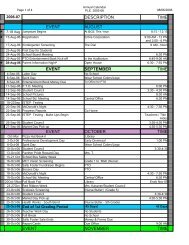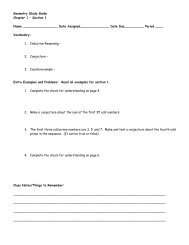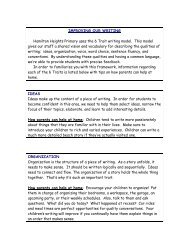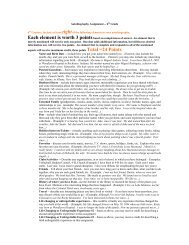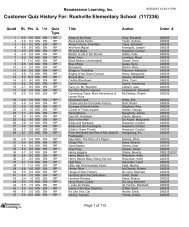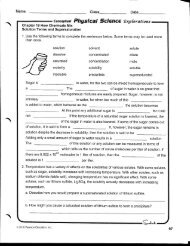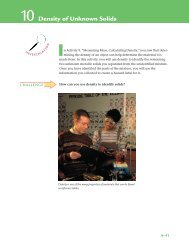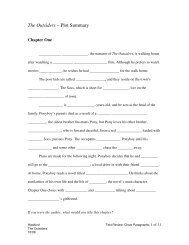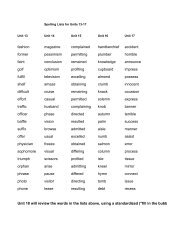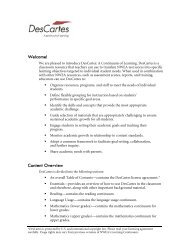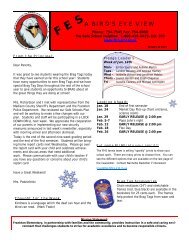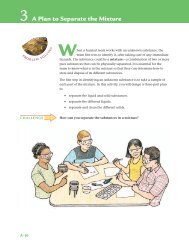9 Measuring Mass, Calculating Density - EZWebSite
9 Measuring Mass, Calculating Density - EZWebSite
9 Measuring Mass, Calculating Density - EZWebSite
You also want an ePaper? Increase the reach of your titles
YUMPU automatically turns print PDFs into web optimized ePapers that Google loves.
<strong>Measuring</strong> <strong>Mass</strong>, <strong>Calculating</strong> <strong>Density</strong> • Activity 9<br />
Part C: Using <strong>Density</strong> to Identify Materials<br />
9. Now that you have calculated the density of several objects, you will use<br />
this to identify the material each of the objects is made from. In your<br />
science notebook, make a table similar to Table 2, “Identifying Objects’<br />
Material Using <strong>Density</strong>.”<br />
Table 2: Identifying Objects’ Material Using <strong>Density</strong><br />
Name of object <strong>Density</strong> calculated Closest density from Table 3 Object’s material<br />
10. In your new table, fill in the name and density calculated for each<br />
object from Table 1, “<strong>Mass</strong>, Volume, and <strong>Density</strong> of Six Objects.”<br />
11. Compare the densities you calculated in Table 2 with the densities shown<br />
in Table 3, “Densities of Selected Solids,” on the next page. Find the<br />
density closest to the density of each object, and enter that in Table 2.<br />
12. Identify the material that might make up each of the six objects.<br />
Hint: Look for the material that has a density closest to the density that<br />
you determined for each object. Write the density and the material of<br />
this object in Table 2.<br />
This bowling ball and balloon<br />
have very similar volumes,<br />
but because the bowling ball<br />
has more mass per volume,<br />
it is more dense.<br />
A-39



